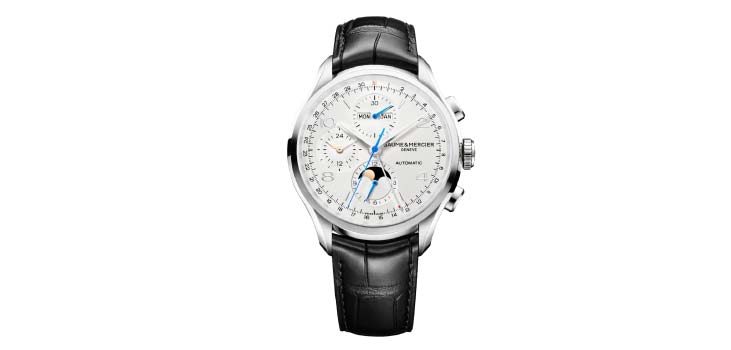To continue our series on the different types of complications in the world of fine watchmaking, this month the focus is on one of the most useful complications in daily life – the Annual Calendar.
From a macro point of view, there are numerous complications that exist in the world of watchmaking. To put it in context, in watchmaking terms, any function other than telling the time is a ‘complication.’ And it’s a fitting adjective, considering that in mechanical watches, even having a date disc means adding a whole set of gears and linkages to the movement. Therefore, from chronographs to lunar calendars, there’s a vast universe of options available to watch aficionados across the complication spectrum. However, the more complicated the watch, the more care it needs with regards to its maintenance. But, if you look at it from a practical standpoint, how many of those complications are actually usable on a daily basis? Well, the most usable complicated watches are actually two types of calendar watches – the first being annual calendars, while the more complicated of the two are perpetual annual calendars. In this issue, we’ll take a look at how annual calendars work and examine some fine specimens of the species – while, in the next issue, we’ll delve into the world of perpetual annual calendars.

To put it simply, annual calendar complications are watches that tell you the date and month, apart from the time. The calendar we follow is based on the ‘Gregorian’ calendar, established by Roman astronomers and it has its own share of quirks for watchmakers to deal with. So, not only do watchmakers have to deal with months that have 30 and 31 days, but there’s also the small matter of February, which has 28 days. And to add even more complexity, every four years, February has 29 days! However, with technology progressing fast, by the late 19th century, watchmakers had derived complications that could work accurately all year long with their calendar functions. They would require adjustment only at the end of February every year – provided, of course, that you kept the watch wound throughout the year.
So, to put it in perspective, the watch’s mechanism not only tells the time, but also has to keep ticking accurately enough to keep the date and month of the year synchronized. As you can imagine, this means that there are a lot of tiny mechanical components working together to keep all this information accurate.Most annual calendar watches are of the classical design, which are more suited to formal wear – such as the gorgeous Omega Globemaster Chronometer, which is very distinctive with is pie-pan shaped dial. Available in multiple dial finishes, the grey dial and the crocodile leather strap is our favourite for its low-key appearance – and also because the grey dial makes the blue detailing of the hands and on the dial really stand out.

The Baume & Mercier Clifton Complete Calendar, meanwhile, would look absolutely appropriate with a suit or a formal shirt. The classic silver dial, with satin-finished and blued steel hands has a very old-school, clean look to it. Not only does the Clifton display the month and day in a sub-dial at the top of the dial, but, more interestingly, the date numerals are marked across the outer edge of the dial with a dedicated red-tipped hand indicating the date. Additionally, the Clifton also has a moon phase complication to add to its appeal – making it a watch that would look good on any gentleman’s wrist.
And, lastly, the third watch to be featured here is also probably the most radical Rolex to have come out from the Swiss watchmaker’s workshops in recent decades. The very first entirely new Rolex in over two decades, the Sky-Dweller is probably the most complicated ‘complication’ from the brand, featuring not only the annual calendar, but also the capability to tell the time in two time zones simultaneously. The dial is an interesting design study, as it features an off-centre sub-dial that tells you the time in a second-time zone. So, think of the sub-dial as your home time, which stays the same no matter where you are, while the time told by the centre hands can be changed depending on your travels. Even more interesting are the small rectangular apertures at each hour marker. As you can see in the picture (above, with Blue dial) while eleven of the apertures remain white, there is only one that is red – and this signifies the month of the year. In this case, the picture was clearly taken in September, which is indicated by the red aperture.
So, if you like to keep abreast of the date, month and time in the traditional manner – using a mechanical marvel – may we recommend any of these three beautiful annual calendars. Form and function have never been in such harmony...
